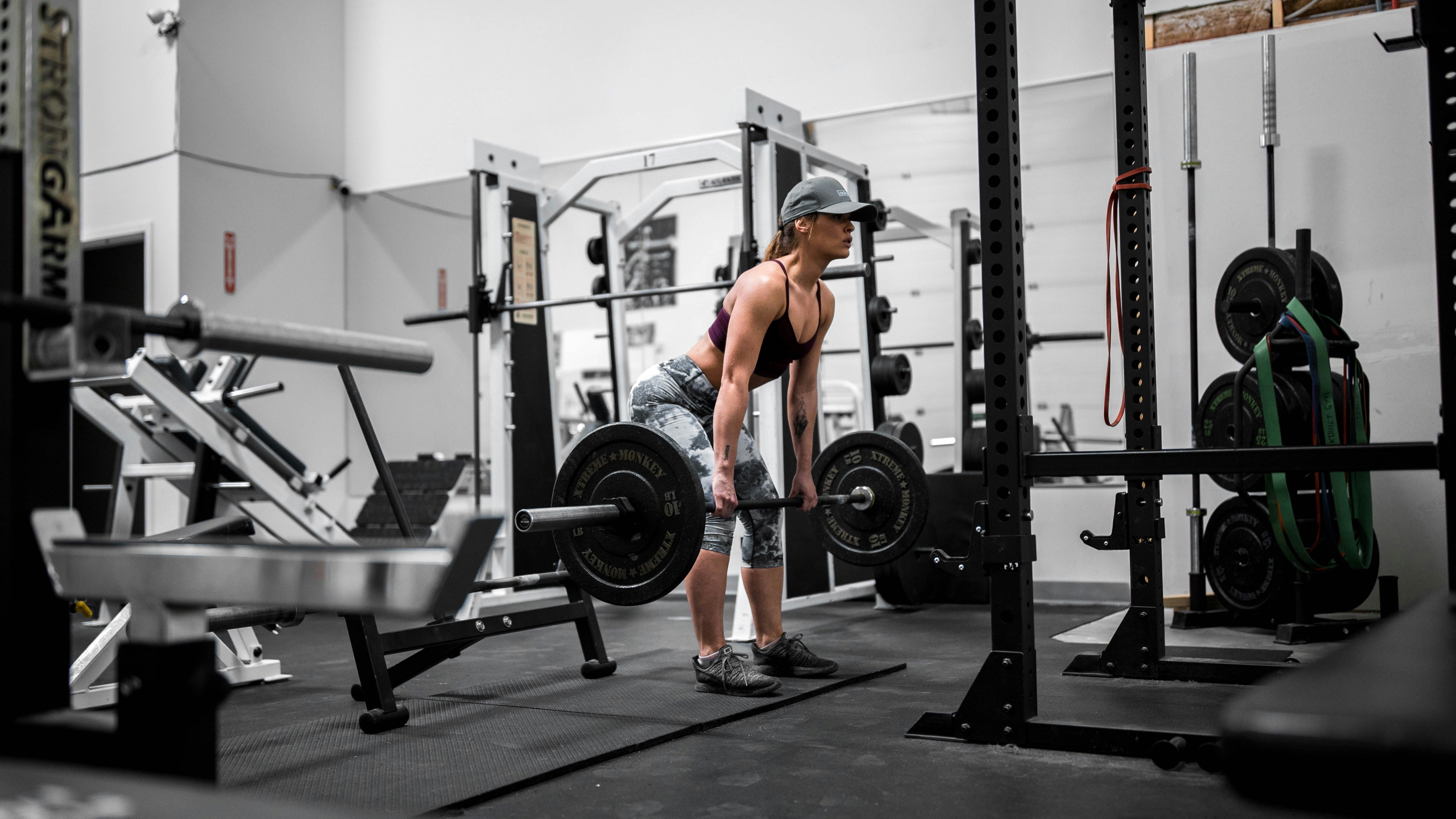
10 Must-Know Strength Training Frames and Racks (Structures, Uses & Key Differences)
When it comes to strength training equipment, we always see frame-based structure. From functional trainers to power racks, these framed machines offer stable support, adjustable features, and multi-exercise compatibility, making them a must-have in both commercial gyms and home workout spaces.
However, some people can’t figure out the differences between them and don’t know which to buy. In this guide, we’ll introduce 10 most popular strength training frames and racks, breaking down their structures, primary training uses, and key differences. Whether you're setting up a new home gym or looking to upgrade your current setup, this article will help you understand which equipment best fits your training goals.
A. Cable-Based Machines
At first, based on different resistance source, strength training equipment can be divided into three categories: cable-based machines, free weight frames, and bodyweight equipment.
Cable Machine, Cable Crossover Machine, Functional Trainer are all belong to cable resistance systems, which realizes resistance through pulleys and weight stacks, and are suitable for functional training, isolated movements, and rehabilitation training. The difference is that Functional Trainer supports a variety of exercises and allows for full-body strength training. Cable Crossover Machine is primarily designed for bilateral crossover movements, which targets the chest and shoulders. While Cable Machine is a general term referring to those strength training equipment that uses pulleys and cables to provide resistance.
Cable Machine
-
Structure:
Single or dual pulley system with adjustable weight stacks. Focused on isolated exercises with smooth, continuous resistance. -
Key Differences:
Compared withFunctional Trainer, typically Cable Machine is more fixed in design and focus more on isolated muscle work and rehabilitation exercises over full-body functional moves. -
Suitable For:
Users who focus on muscle isolation, rehab, or adding cable-based accessory movements to free-weight workouts.

Cable Crossover Machine
-
Structure:
Two tall upright frames with adjustable pulleys connected by a crossbeam. Allows for simultaneous bilateral or unilateral exercises, primarily targeting upper body muscles. -
Key Differences:
Specifically designed for opposing resistance chestexercises, shoulder exercises, and arm workouts. Provides a unique, adjustable horizontal resistance not available on standard Cable Machines. -
Suitable For:
Athletes and fitness enthusiastswho focus on upper body strength and hypertrophy and want to develop especially chest and shoulder.
Functional Trainer
-
Structure:
Dual adjustable pulley system with multiple attachments. Height and angle adjustable pulleys allow for a wide range of resistance-based, multi-directional exercises. -
Key Differences:
Offers the most versatility among cable-based machines. Compared to single-pulley systems, Functional Trainer Machinesupports full-body functional training with dozens of movement variations. -
Suitable For:
Users who seeksdiverse, multi functional strength training, from beginners to advanced athletes.

B. Free Weight Frames
Free weight training usually use barbells, dumbbells, or other weighted equipment. This natural, unrestricted movement can engage more stabilizing muscles, making it ideal for strength building and functional fitness. Power Racks, Squat Racks, or Half Racks are equipment that have no fixed tracks or guided systems. They are made to ensure safety when lifting barbells. They offer stable support while users can control the movement path and maintain balance by themselves, which makes them well-suited for heavy compound lifts such as squats, bench presses, and deadlifts.
Power Rack
-
Structure:
An open or semi-enclosed four-post frame equipped with adjustable barbell hooks (J-hooks) and safety spotter arms. It provides a stable structure to hold the barbell at various heights for different exercises. -
Key Differences:
Offers solid support and safety for free weight lifts while allowing easier access and a less confined training space compared to a Power Cage. It’s versatile and can often be paired with add-ons like Pull-up Bars or dip attachments. -
Suitable For:
Lifters who seek a reliable, flexible setup for barbell exercises like squats, bench presses, and overhead presses — ideal for home gyms and commercial setups where accessibility matters.
Power Cage
-
Structure:
A fully enclosed four-post (or sometimes six-post) frame with integrated adjustable barbell hooks and internal safety bars (or straps). The cage design surrounds the lifter, offering maximum containment and protection during lifts. -
Key Differences:
Provides the highest level of safety by preventing the barbell from falling outside the rack and reducing the risk of lateral movement. Its enclosed design offers unmatched protection during heavy, high-risk lifts. -
Suitable For:
Advanced and heavy lifters who prioritize maximum safety, solo trainers handling big weights, and athletes performing compound barbell movements like squats, deadlifts, and bench presses within a fully secured environment.

Squat Rack
-
Structure:
Open two-post frame designed primarily for squats and overhead lifts, sometimes with adjustable safety arms. -
Key Differences:
More space-saving and mobile than a Power Cage, but with less built-in safety features. Focused on lower body and barbell overhead movements. -
Suitable For:
Lifters with limited space who prioritize squats, presses, and other standing barbell lifts.
Half Rack
-
Structure:
Two-post frame with added safety spotter arms, providing a balance between an open rack and a full Power Cage. -
Key Differences:
Combines the compact size of a Squat Rack with improved safety features. More versatile for both barbell lifts and accessory movements. -
Suitable For:
Home gym owners and those who need a safer, space-efficient option for barbell training.
C. Guided Movement Frames
Unlike free weight frames that allow unrestricted barbell movement, Smith Machine belongs to guided frames which also uses barbell as the resistance source but fixes it within steel rails, which limits its movement path during strength training exercises. This keeps balance, enhances safety and makes it the equipment more suitable for beginners, solo workouts, and fixed-path exercises.
Smith Machine
-
Structure:
A fixed barbell attached to vertical guide rails, often with adjustable safety stops. Ensures a controlled lifting path. -
Key Differences:
Unlike free-weight racks, it limits barbell movement to a set vertical path, reducing the risk of imbalance. Ideal for solo training. -
Suitable For:
Beginners, solo lifters, and those who seek extra safety for squats, bench presses, and shoulder presses.
D. Bodyweight Training Frames
Bodyweight training refers to exercise that uses your own body weight as resistance instead of external weights. Common equipment includes Pull-up Bars, Chin-up Stations, and Power Towers. These frames are primarily designed to train upper body strength, core stability, and overall physical fitness.
Pull-up Bar / Chin-up Station
-
Structure:
Simple standalone or wall-mounted bar frame, often featuring multiple grip positions for different pull-up variations. -
Key Differences:
Dedicated to upper body pulling exercises. More compact and affordable than multifunctional towers. -
Suitable For:
Bodyweight training beginners and experienced athletes focusing on upper body strength and grip variety.
Power Tower
-
Structure:
Freestanding frame combining Pull-up Bars, dip handles, vertical knee raise pads, and push-up stations. -
Key Differences:
Focused on bodyweight trainingworkout, offering multiple exercises in one compact piece of equipment without weights. -
Suitable For:
Home gym users and bodyweight training enthusiastswho look for upper body and core strength development.

Strength Training Frames and Racks Comparison Table
|
Equipment Name |
Structure Features |
Main Training Movements |
Level of Safety |
Degrees of Freedom |
Space Required |
|
Cable Machine |
Single/multiple pulleys |
Pulldown, chest fly, row |
Medium |
High |
Medium |
|
Cable Crossover Machine |
Large dual-side pulley frame |
Cable fly, chest fly, lateral raise |
Medium |
High |
Large |
|
Functional Trainer |
Multiple pulleys, adjustable height |
Cable fly, lat pulldown, row, shoulder press, cable crunch |
High |
High |
Medium |
|
Power Rack |
Open four-post with safety pins |
Squat, bench press, deadlift, overhead press |
High |
High |
Large |
|
Power Cage |
Enclosed structure, four-post frame |
Squat, bench press, overhead press, deadlift |
High |
High |
Large |
|
Squat Rack |
Simple two-post stand |
Squat, overhead press |
Low |
High |
Small |
|
Half Rack |
Semi-enclosed two-post frame |
Squat, bench press, overhead press |
Medium |
High |
Medium |
|
Smith Machine |
Fixed barbell on guided rails |
Bench press, squat, overhead press |
High |
Low (limited movement path) |
Medium |
|
Pull-up Bar/ Chin-up Station |
Simple upright pull-up bar |
Pull-ups, hanging core work |
Low |
Low |
Small |
|
Power Tower |
Multi-functional bodyweight station |
Pull-ups, dip bar leg raises, knee raises |
Medium |
Medium |
Medium |
How to Choose the Right Strength Training Equipment
When selecting strength training frames and racks, the most important is to find a equipment that really suits you, which will largely improve exercise efficiency. Following key points will help you find out what you really need.
1. What's Your Training Goals?
For Strength Building: If you want to do heavy compound lifts like squats, bench press, and deadlifts to build strength, you can use Power Rack, Power Cage, Smith Machine.
For Functional Training: If you want to train multiple muscles from multiple angles, comprehensive cable-based machine are recommended: Functional Trainer, Cable Crossover.
For Bodyweight Training: If you focus on bodyweight training like pull-ups, dips, leg raises, and other calisthenics movements. Power Tower, Pull-up/Chin-up Station are recommended.
2. How Important is Safety to You?
High Safety Needs: Choose equipment with safety bars, spotter arms, or guided rails. Recommended: Power Cage, Smith Machine.
Moderate Safety Needs: Open-frame racks with optional attachments.
Low Safety Needs: Bodyweight stations or minimalistic Squat Racks.
3. Is Your Workout Type Single-purpose or Versatile?
Single-Purpose: Choose equipment that focus on one type of exercise (e.g., Squat Rack for squats only).
Multi-Functional: Choose comprehensive equipment that train multiple muscle groups with one machine. Recommended: Functional Trainer, Cable Crossover, Power Tower.
4. How Much Space and Budget Do You Have?
Limited Space/Budget: For users with limited space and budget, especially those focusing on bodyweight training, compact options like Pull-up/Chin-up Stations or compact Power Tower are ideal. These offer essential functions like pull-ups, dips, and core exercises without requiring much floor space or a large investment.
Moderate Space/Budget: If you want to do strength training exercises at home with moderate space and budget, versatile and space-efficient equipment such as Half Racks, Squat Racks, folding Power Rack and Smith Machines are recommended. These options offer reliable safety and multiple training possibilities without occupying excessive space.
Large Space/Generous Budget: For large commercial gyms, or users with a higher budget who want to build a garage gym, comprehensive systems like Power Cages (Power Racks), Functional Trainers, and home gym Cable Machines deliver the most complete strength training experience, covering free weight, cable, and bodyweight exercises in one well-equipped training zone.

5. Are You an Experienced Trainer?
Beginners: When it comes to strength training for beginners, Smith Machines and Power Towers provide a safer, more controlled workout experience.
Intermediate/Advanced Users: Choose open racks or multi-cable systems for more freedom and challenge.
Professional/Competitive Lifters: Invest in heavy-duty Power Cages, Racks with safety arms, and high-load-capacity machines.
Conclusion
As mentioned above, we talked about 10 common types of strength training frames and racks, along with their structures, key differences, recommended exercises movement and target users. We can summarize the key points as follows:
- Based on the resistance source and structure of the equipment, these 10 types of strength training frames and racks can be categorized as follows:
- Cable-Based Machines: Equipment that uses cable resistance systems, including the Cable Crossover Machine, Cable Machine, and Functional Trainer.
- Free Weight Frames: Equipment that relies on external weights but allows free control of the movement path, such as the Power Rack, Power Cage, Squat Rack, and Half Rack.
- Guided Movement Frames: Equipment that uses a fixed track to limit the movement path of the weight, like Smith Machines.
- Bodyweight Training Equipment:Equipment that uses own trainers’ body weight as resistance, such as the Pull-up Bar / Chin-up Station and Power Tower.
- When picking strength training equipment, go over thesekey points first to choose a right frame or rack: your training goals, available space and budget, safety needs, exercise variety, and how experienced you are. Taking these factors into account will help you create a workout space that is both effective and safe.

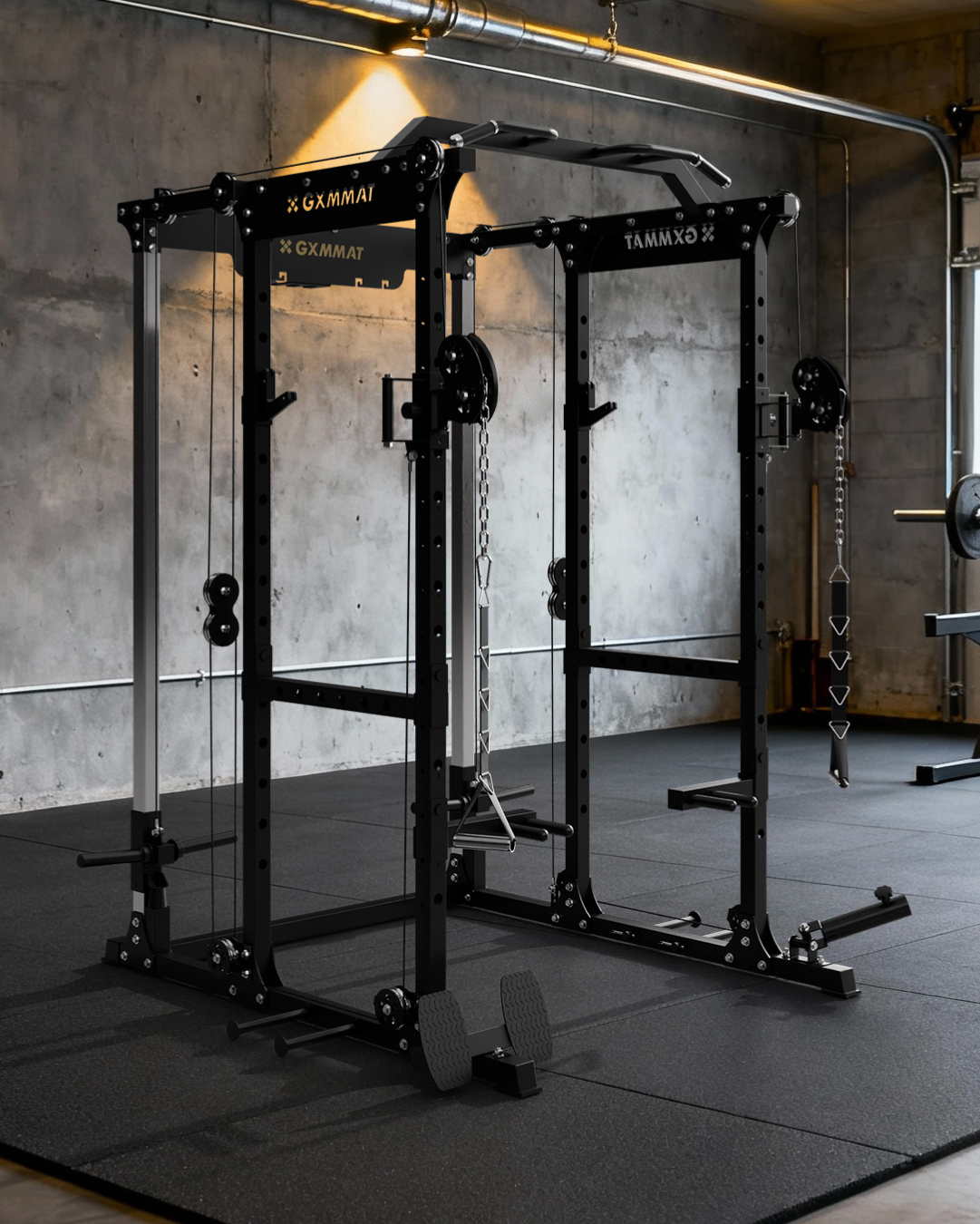
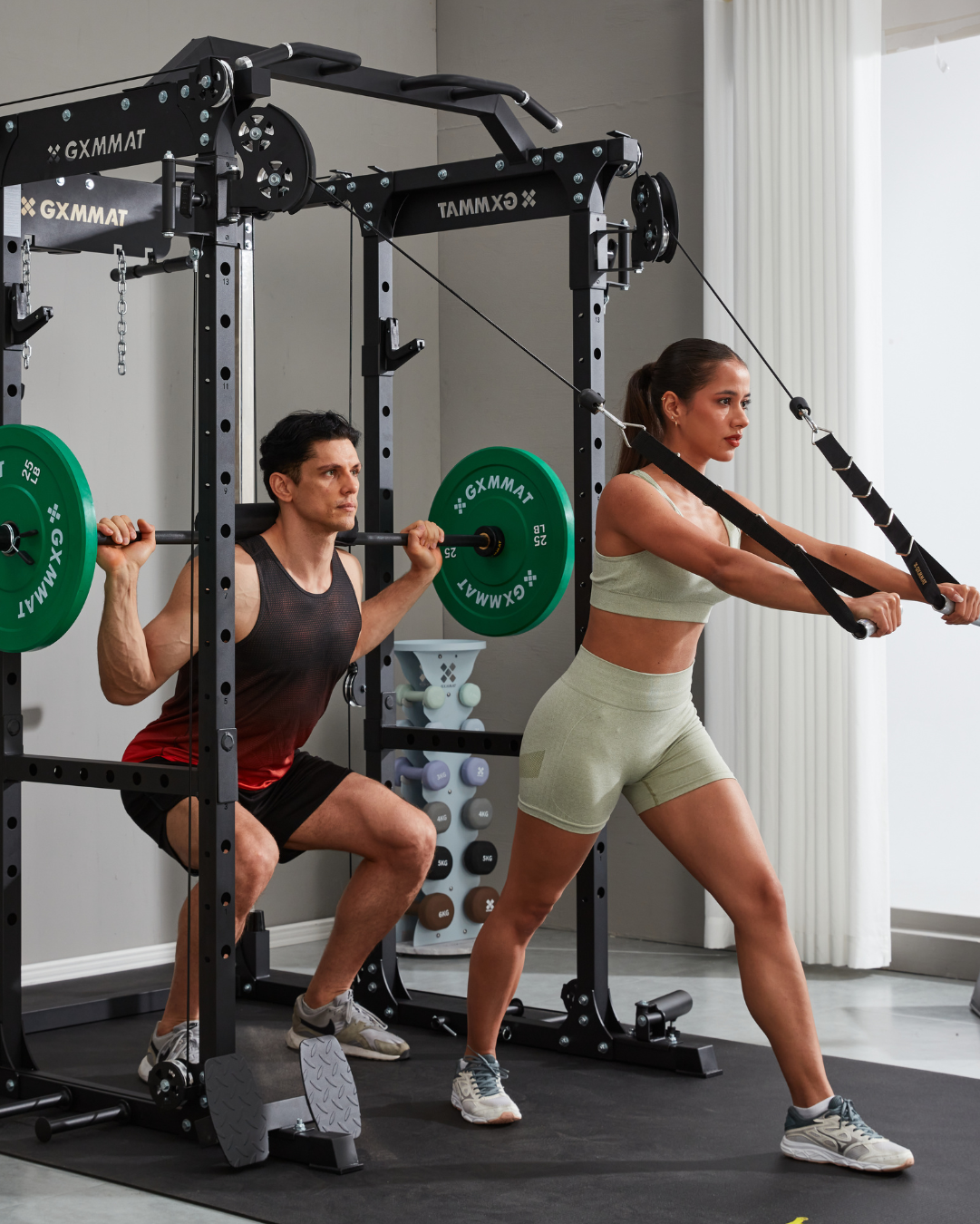
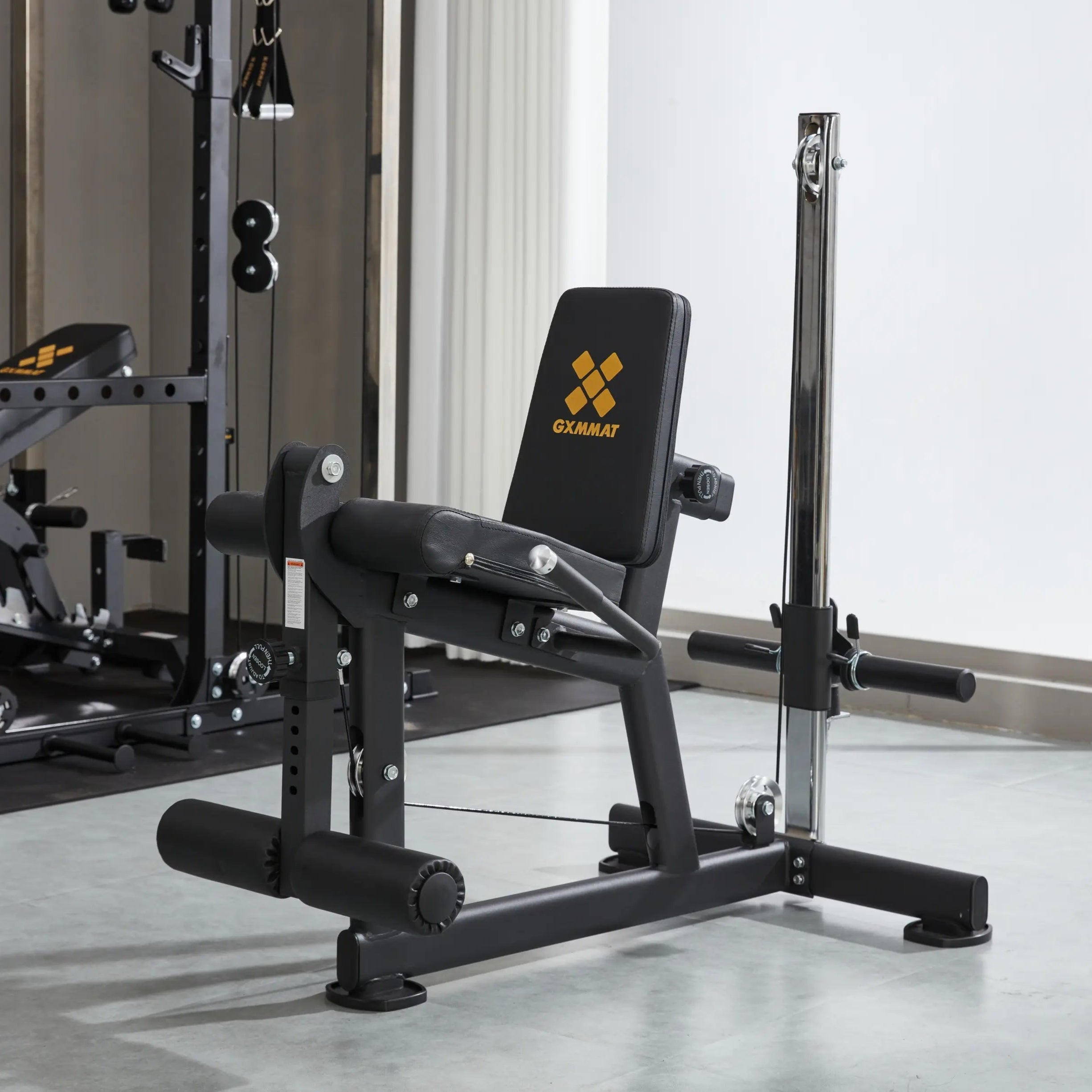
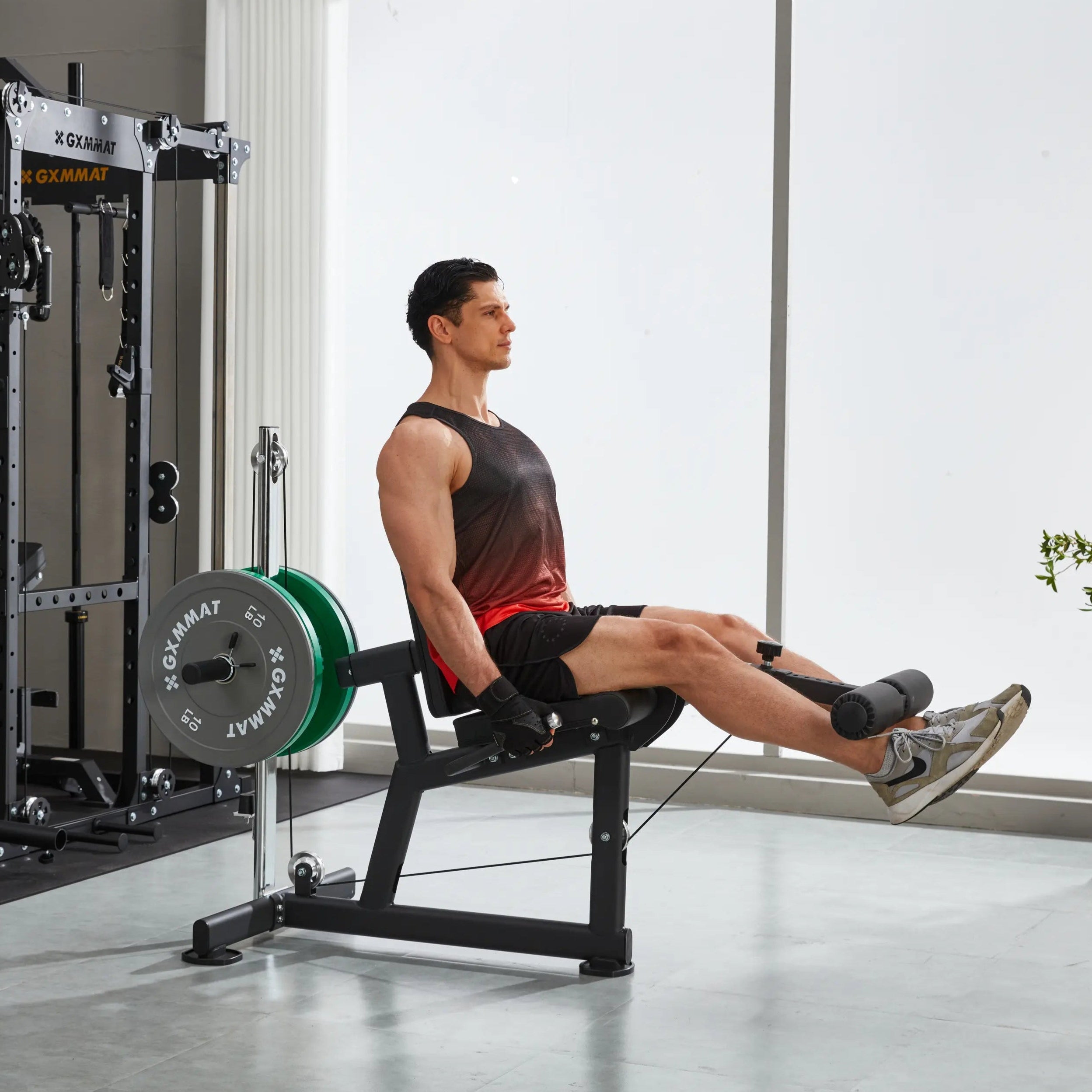
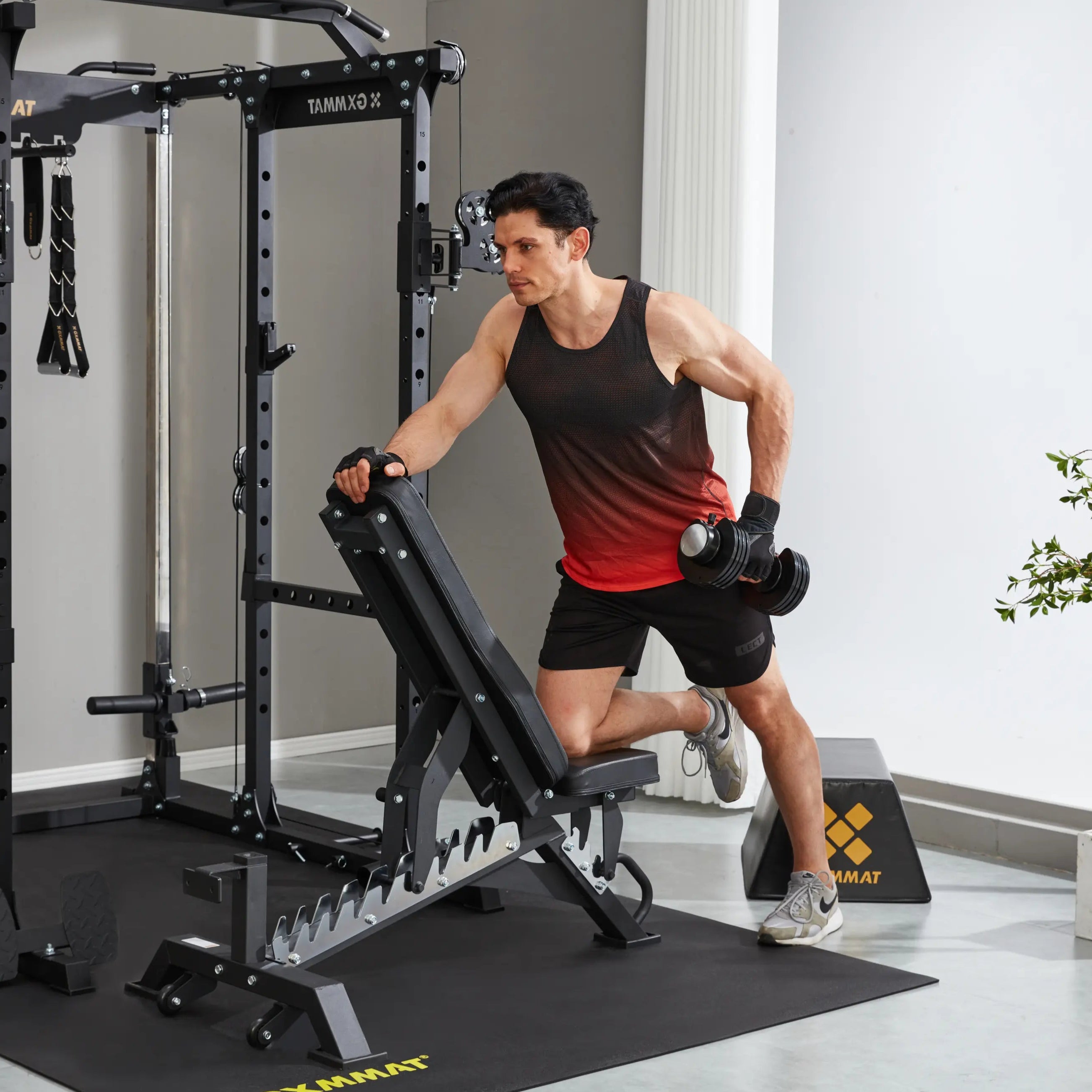
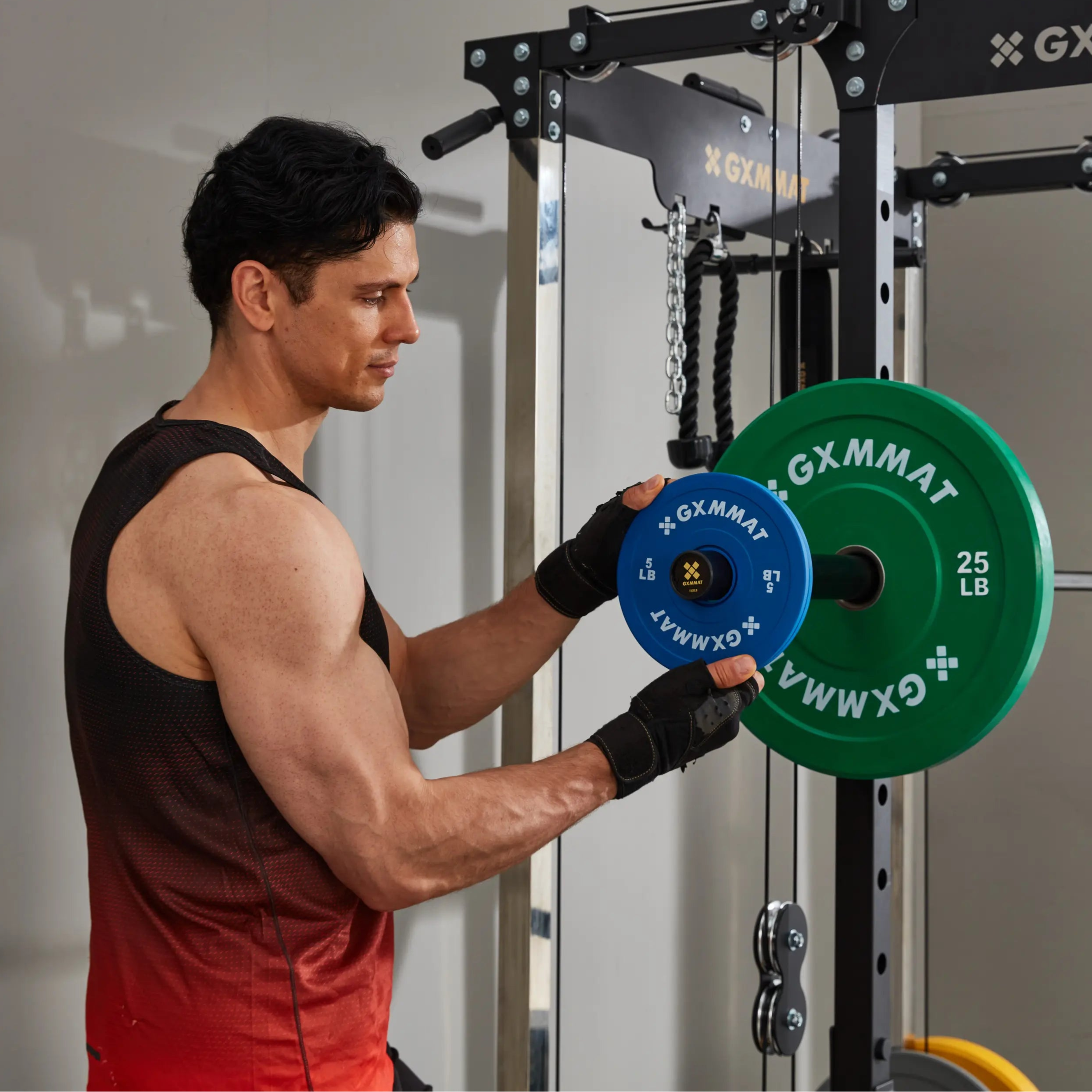
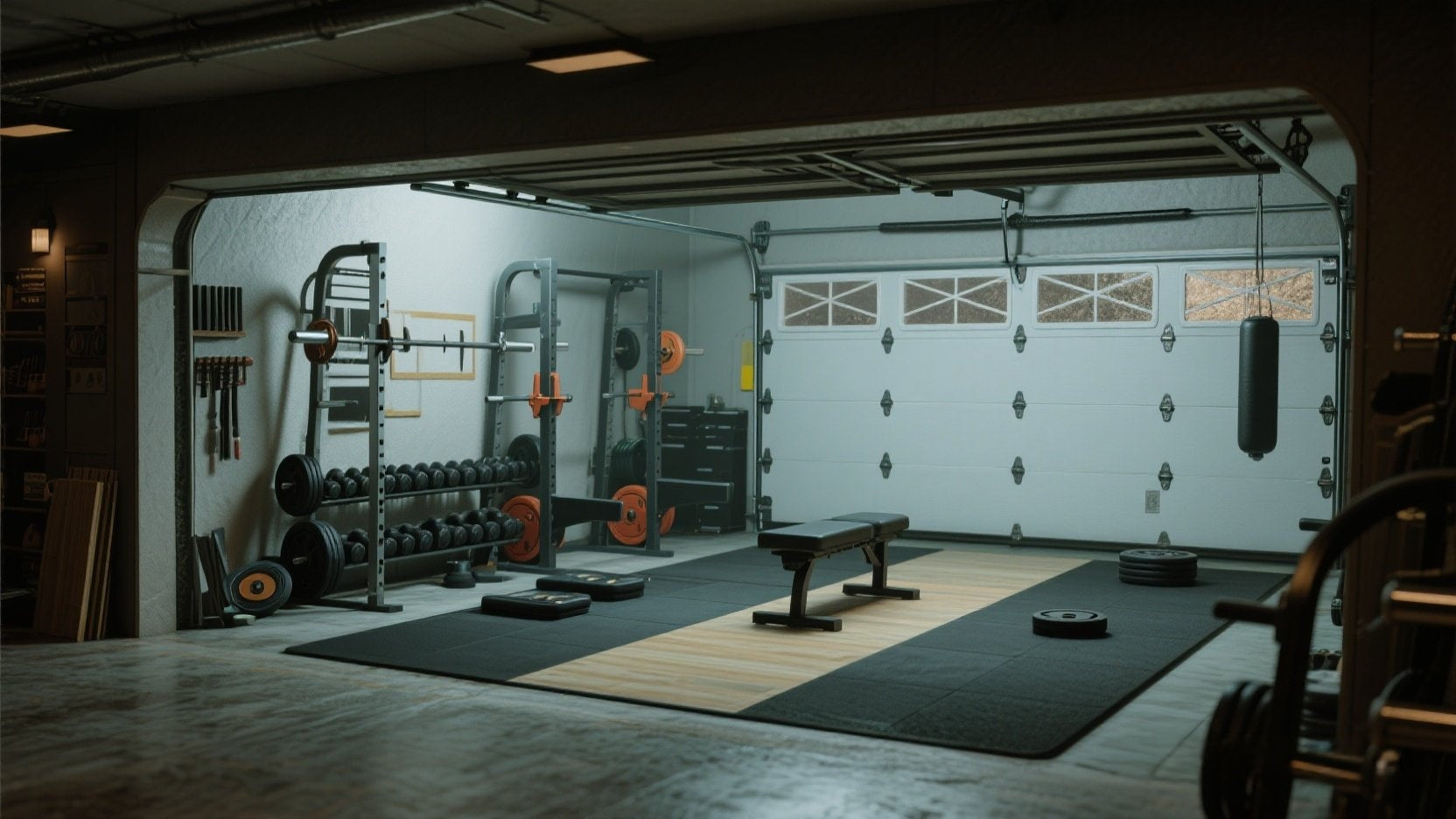
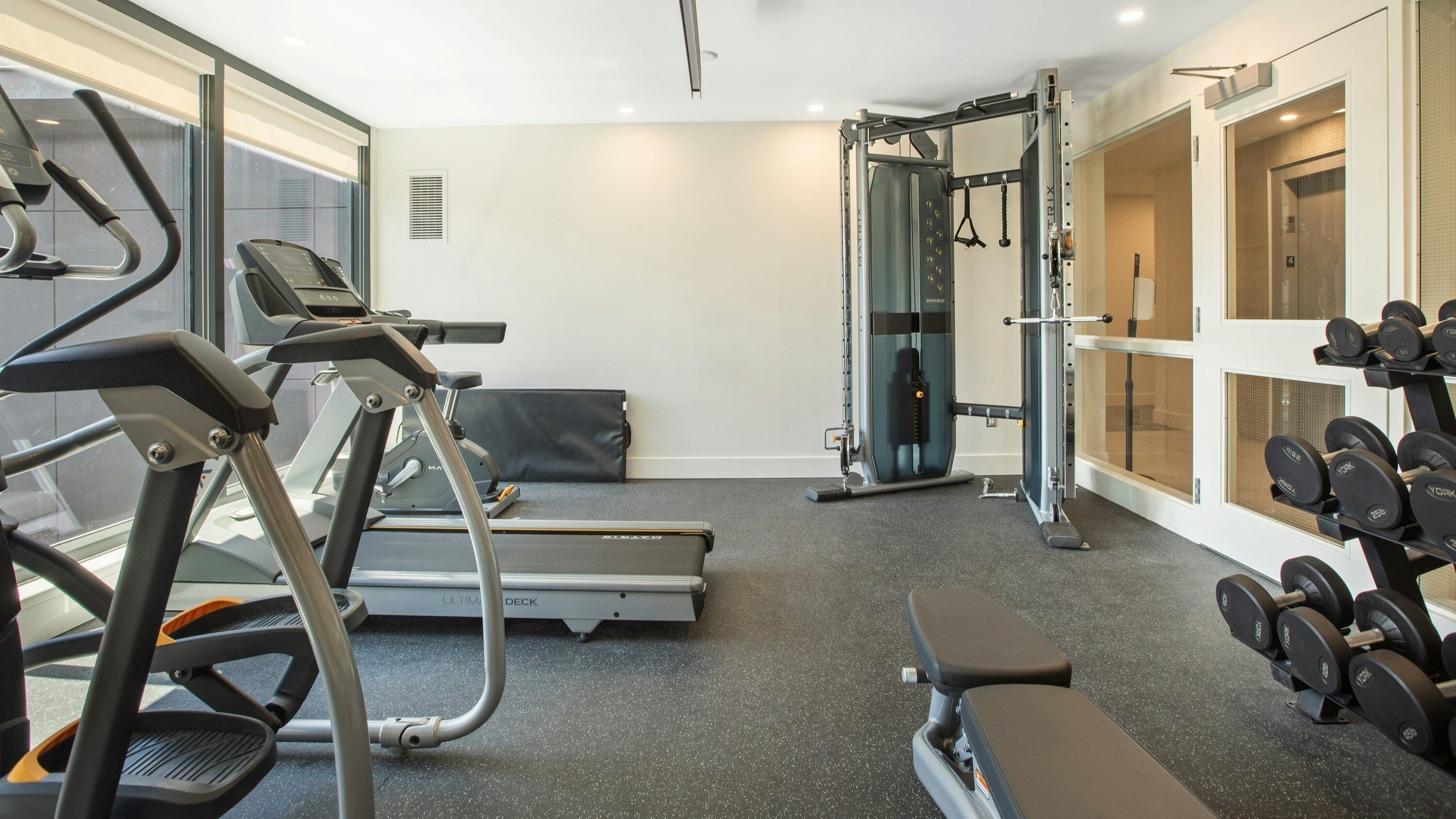
Leave a comment
This site is protected by hCaptcha and the hCaptcha Privacy Policy and Terms of Service apply.